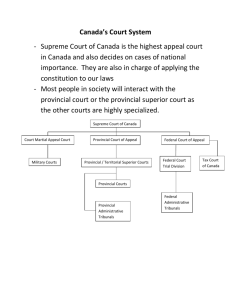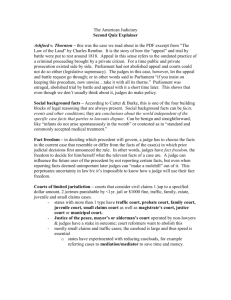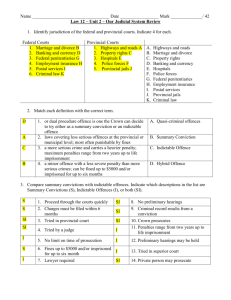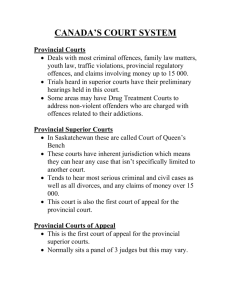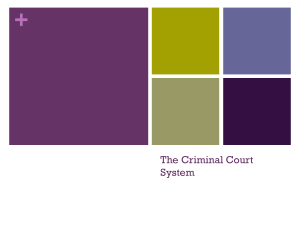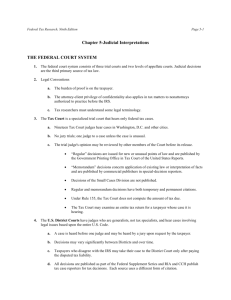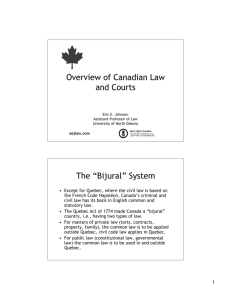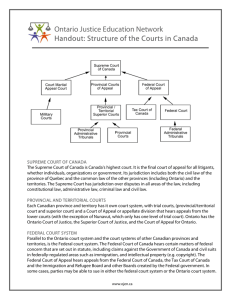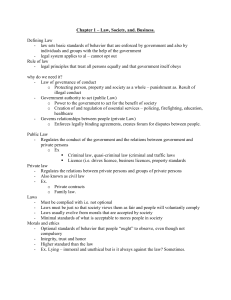ppt
advertisement
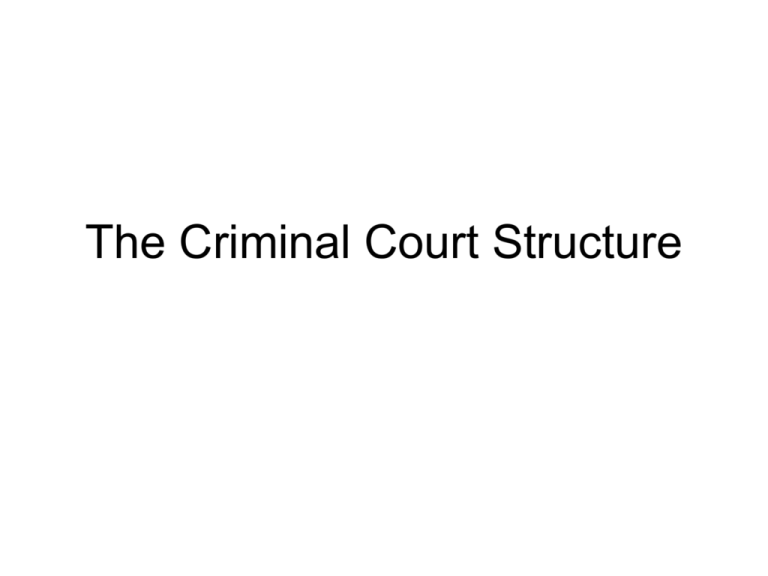
The Criminal Court Structure Provincial Court • Bottom of the hierarchy of Canadian courts • Judges appointed by provincial gov’t • Cases tried by judge alone – no jury • Hears summary conviction offences and some indictable Types: • Summary offences: less serious crimes with lighter penalties e.g. public nudity, causing a disturbance • Indictable offences: more serious crimes with higher penalties e.g. theft Preliminary Hearings • Determine whether there is sufficient evidence to put the accused on trial • Protects accused from unnecessary trials • Protects society from unnecessary expenses Appeal • An application to a higher court to review the decision made by a lower court • Appeals are heard in the Superior Court of the province • Appeal of Summary Conviction – one judge • Appeal of Indictable Conviction – panel of three to five judges Superior Courts • Highest level of provincial courts • Supreme Court of Nova Scotia • Trial division and appeal division • Jurisdiction in criminal and civil matters • Trial by judge and judge/jury Federal Court of Canada • Trial and appeal division • Trials for civil claims involving the federal government ie. – Immigration matters – Intellectual Property – Federal Employment Disputes • Enforceable throughout the provinces. Supreme Court of Canada • Highest court in Canada • Only hears appeals (but they must grant permission) from provincial and federal courts • Matters of concern for all Canadians • Also hears constitutional questions from federal government • 9 judges (from all regions of Canada, 3 must be from Quebec) Other Courts • Separate courts that deal with just federal matters e.g. tax court, military law, immigration • Aboriginal courts act similarly to provincial superior courts - cannot make decisions that conflict with federal criminal law • Aboriginal sentencing circles – purpose is restorative justice Figure 7.10 Trial by Jury, p. 183
